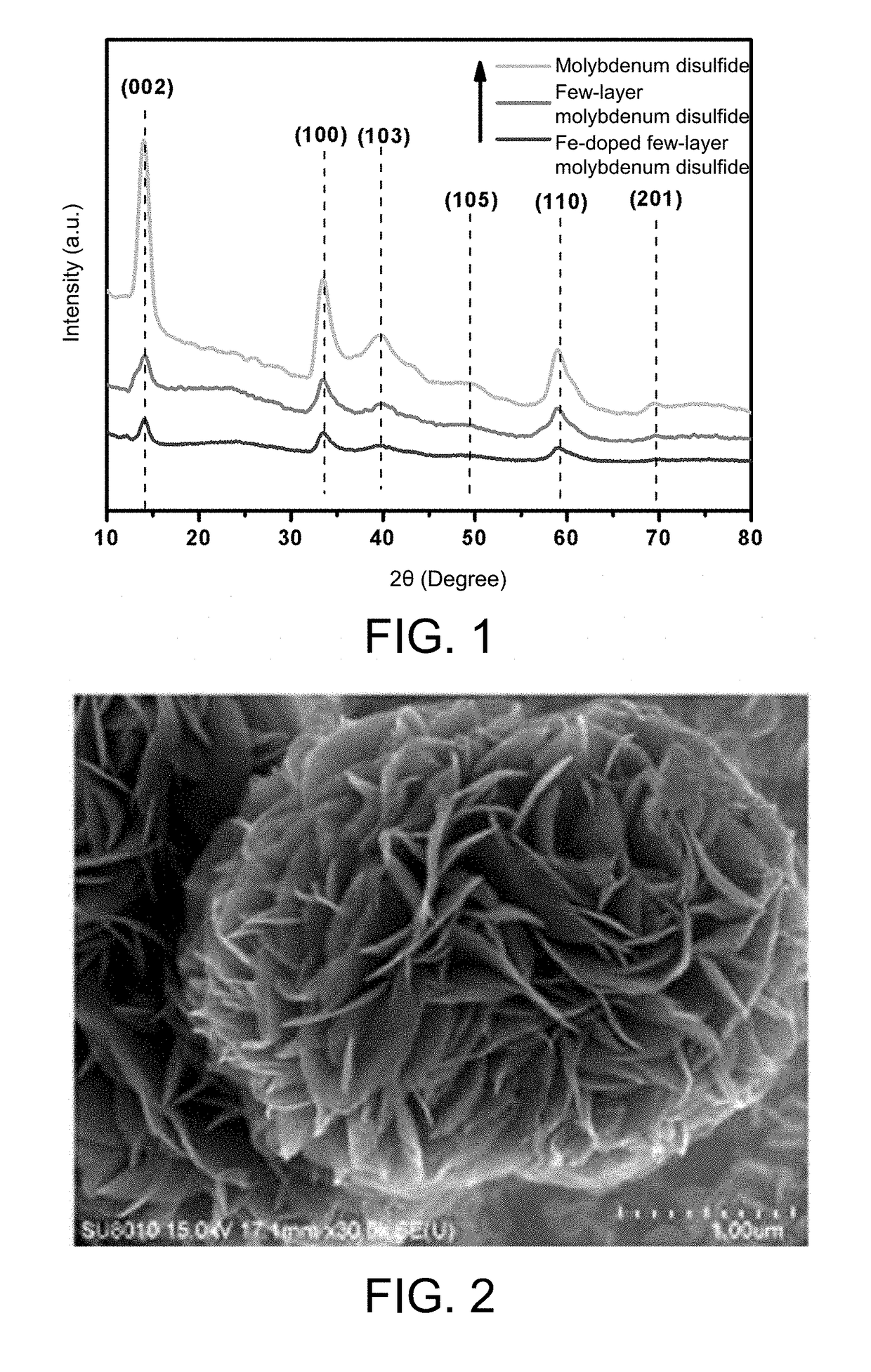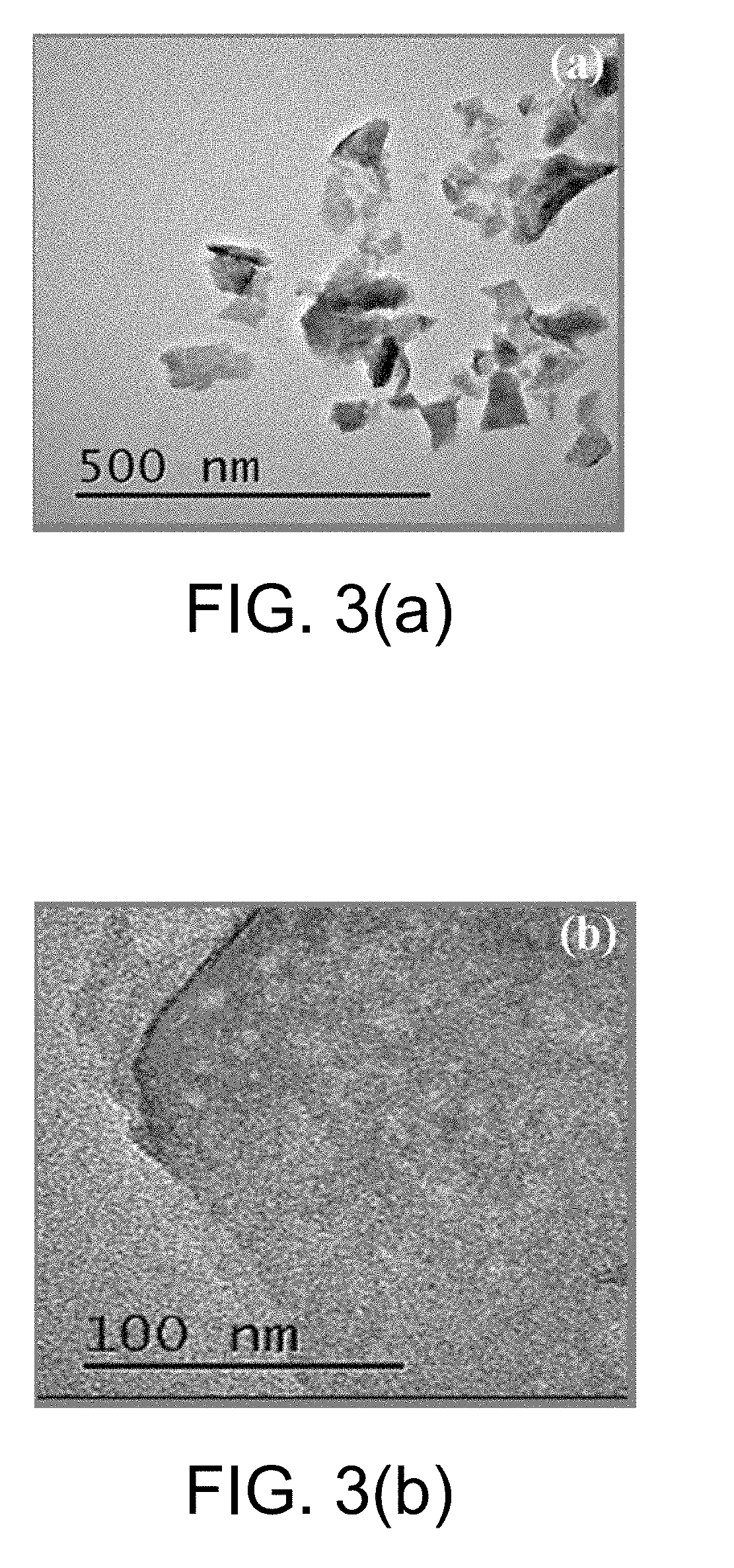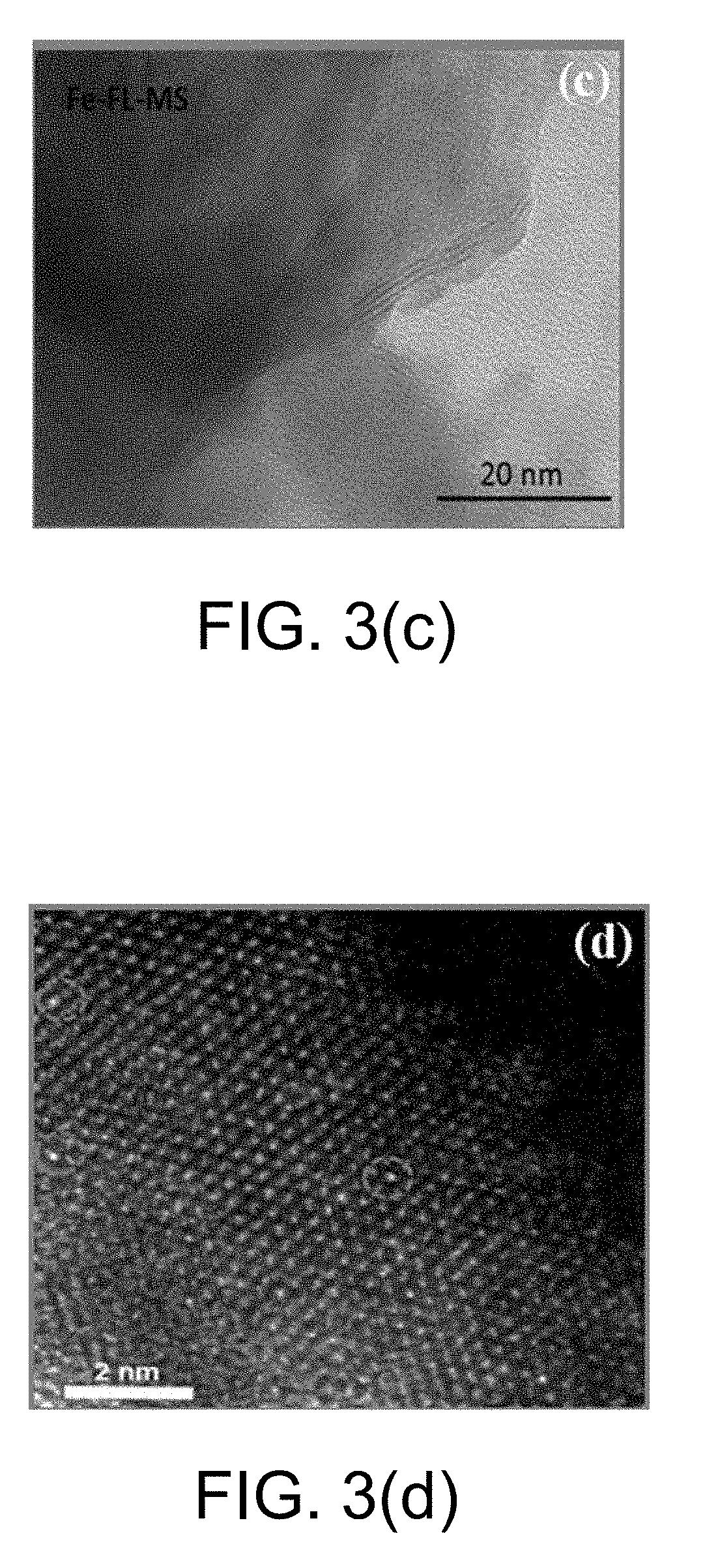Monatomic metal-doped few-layer molybdenum disulfide electrocatalytic material, preparing method thereof, and method for electrocatalytic nitrogen fixation
a molybdenum disulfide and electrocatalytic technology, applied in the field of catalysis, can solve the problems of high energy consumption of the entire haber-bosch reaction, inability to achieve controllable nitrogen fixation of most nitrogen fixation microorganisms, and about 1.1% of fossil fuels, and achieves easy synthesis, low cost, and readily available raw materials
- Summary
- Abstract
- Description
- Claims
- Application Information
AI Technical Summary
Benefits of technology
Problems solved by technology
Method used
Image
Examples
example 1
[0044]Preparation of iron-doped few-layer molybdenum disulfide material and electrocatalytic reduction of N2.
[0045]At room temperature, 1.236 g of ammonium molybdate tetrahydrate and 1.824 g of thiourea were sequentially added to 50 mL of distilled water and mixed uniformly by stirring for 30 min. The mixed solution was transferred to an 80 mL PTFE liner, and then the liner was placed in a reactor and heated in a constant temperature oven. The reaction temperature and time were controlled to 200° C. and 24 h respectively. After the reaction was completed, the reactor was allowed to naturally cool to room temperature. The solid reaction product was collected by centrifugation, and washed 3 times each with dilute hydrochloric acid, distilled water, and anhydrous ethanol. The washed solid product was collected by centrifugation, and dried in a vacuum oven at 80° C., to obtain a flower-ball-shaped molybdenum disulfide. The SEM image is shown in FIG. 2. FIG. 2 shows that the molybdenum d...
example 2
[0060]Preparation of iron-doped few-layer molybdenum disulfide material and electrocatalytic reduction of N2.
[0061]At room temperature, 1.236 g of ammonium molybdate tetrahydrate and 1.824 g of thiourea were sequentially added to 50 mL of distilled water and mixed uniformly by stirring for 30 min. The mixed solution was transferred to an 80 mL PTFE liner, and then the liner was placed in a reactor and heated in a constant temperature oven. The reaction temperature and time were controlled to 200° C. and 22 h respectively. After the reaction was completed, the reactor was allowed to naturally cool to room temperature. The solid reaction product was collected by centrifugation, and washed 3 times each with dilute hydrochloric acid, distilled water, and anhydrous ethanol. The washed solid product was collected by centrifugation, and dried in a vacuum oven at 80° C., to obtain a flower-ball-shaped molybdenum disulfide.
[0062]0.1 g of the flower-ball-shaped molybdenum disulfide was added ...
example 3
[0068]Preparation of iron-doped few-layer molybdenum disulfide material and electrocatalytic reduction of N2.
[0069]At room temperature, 1.236 g of ammonium molybdate tetrahydrate and 1.824 g of thiourea were sequentially added to 50 mL of distilled water and mixed uniformly by stirring for 30 min. The mixed solution was transferred to an 80 mL PTFE liner, and then the liner was placed in a reactor and heated in a constant temperature oven. The reaction temperature and time were controlled to 180° C. and 24 h respectively. After the reaction was completed, the reactor was allowed to naturally cool to room temperature. The solid reaction product was collected by centrifugation, and washed 3 times each with dilute hydrochloric acid, distilled water, and anhydrous ethanol. The washed solid product was collected by centrifugation, and dried in a vacuum oven at 80° C., to obtain a flower-ball-shaped molybdenum disulfide.
[0070]0.1 g of the flower-ball-shaped molybdenum disulfide was added ...
PUM
| Property | Measurement | Unit |
|---|---|---|
| width | aaaaa | aaaaa |
| temperature | aaaaa | aaaaa |
| temperature | aaaaa | aaaaa |
Abstract
Description
Claims
Application Information
 Login to View More
Login to View More - R&D
- Intellectual Property
- Life Sciences
- Materials
- Tech Scout
- Unparalleled Data Quality
- Higher Quality Content
- 60% Fewer Hallucinations
Browse by: Latest US Patents, China's latest patents, Technical Efficacy Thesaurus, Application Domain, Technology Topic, Popular Technical Reports.
© 2025 PatSnap. All rights reserved.Legal|Privacy policy|Modern Slavery Act Transparency Statement|Sitemap|About US| Contact US: help@patsnap.com



